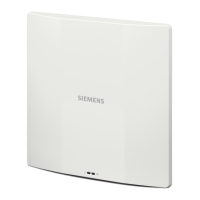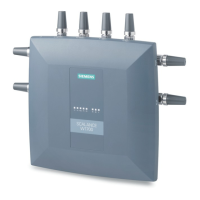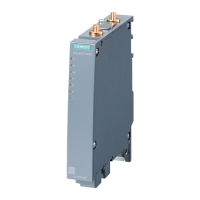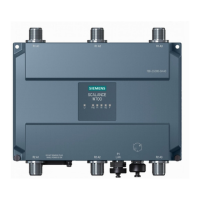Captive Portal for Guest Access
13.8 Configuring Captive Portal Roles for an SSID
SCALANCE W1750D UI
192 Configuration Manual, 02/2018, C79000-G8976-C451-02
Internal If
is selected as splash page type, perform the following steps:
• Under
, use the editor to specify display text and
colors for the initial page that would be displayed to users connecting
to the network. The initial page asks for user credentials or email, de-
pending on the splash page type configured.
• To change the color of the splash page, click the
rectan-
gle and select the required color from the
palette.
• To change the welcome text, click the first square box in the splash
page, type the required text in the
text box, and then click
. Ensure that the welcome text does not exceed 127 characters.
•
To change the policy text, click the second square box in the splash
page, type the required text in the
text box, and click
. En-
sure that the policy text does not exceed 255 characters.
• Specify the URL to which you want to redirect the guest users.
• To upload a custom logo, click
Upload your own custom logo Figure
,
browse the image file, and click
.
• To preview the captive portal page, click
.
External If
is selected, perform the following steps:
• Select a profile from the
drop-down list.
• If you want to edit the profile, click
and update the following pa-
rameters:
–
—Select either
(to enable user au-
thentication against a RADIUS server) or
(to
specify the authentication text to be returned by the external serv-
er after a successful user authentication).
–
— Enter the IP address or the host name of the
external splash page server.
–
— Enter the URL for the external splash page server.
–
—Enter the port number.
–
—Specify a redirect URL if you want to redirect the
users to another URL.
–
—The
drop- down list
allows you to configure Internet access for the guest clients when
the external captive portal server is not available. Select
to prevent clients from using the network, or
to allow the guest clients to access Internet when the external
captive portal server is not available.
–
Automatic URL Whitelisting
—Select
or
to ena-
ble or disable automatic whitelisting of URLs. On selecting the
check box for the external captive portal authentication, the URLs
allowed for the unauthenticated users to access are automatically
whitelisted. The automatic URL whitelisting is disabled by default.
–
—Indicates the authentication text returned by the ex-
ternal server after a successful user authentication.
6. Click
. The enforce captive portal rule is created and listed as an access rule.

